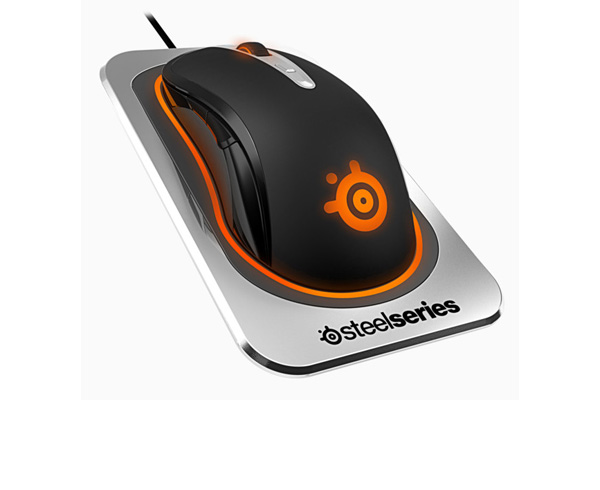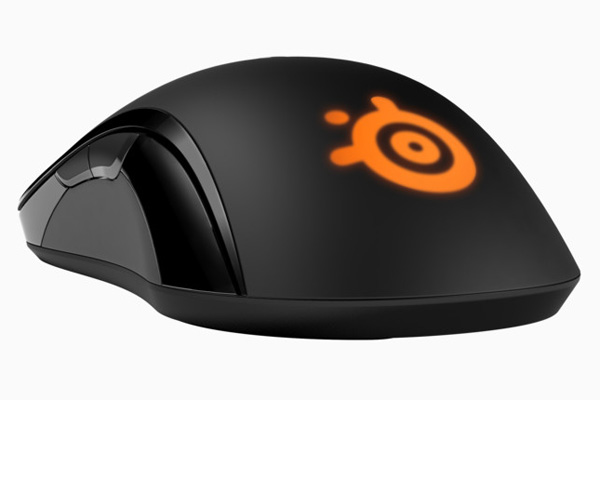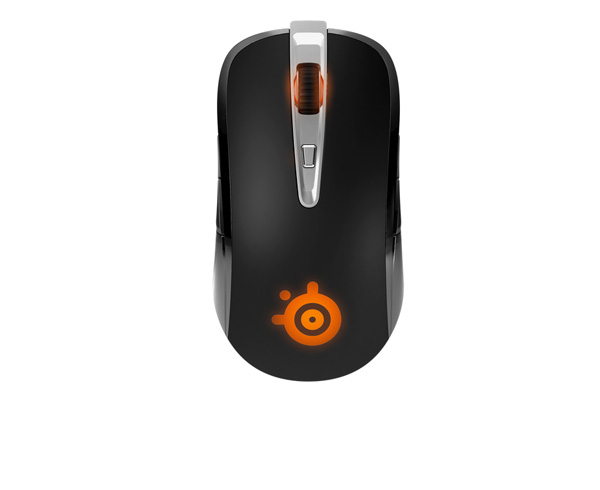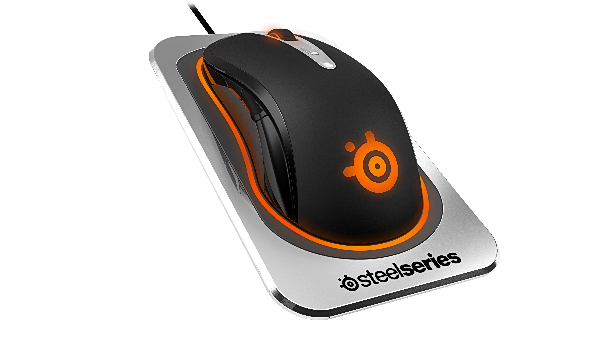Tom's Guide Verdict
With perfect performance, intelligent design and useful software, the SteelSeries Sensei is one of the best wireless gaming mice available.
Pros
- +
Perfect wireless performance
- +
Robust, user-friendly software
- +
Streamlined design
- +
Gorgeous, useful dock
Cons
- -
Not ergonomic
- -
Only two DPI settings
Why you can trust Tom's Guide
Finding a gaming-quality wireless mouse is difficult enough, but finding one that's also an excellent mouse in its own right is nearly impossible. The SteelSeries Sensei ($160) provides the best of both worlds. Not only is the Sensei a well-designed mouse with sensible software, but it presents perfect wireless functionality with long battery life and helpful performance options.
Design
The Sensei keeps its design as simple as possible. The mouse is ambidextrous and symmetrical, and its streamlined shape keeps it suitable for both palm and claw players of any hand size.

Of course, this accessibility comes at a price: the Sensei is not ergonomic, and does not offer an optimized experience for any type of player. The Sensei lacks textured pads or finger rests. To call the mouse uncomfortable would be inaccurate, but it's rather minimalist.
Buttonwise, the Sensei keeps things simple, but uses smart placement to its advantage. Users have access to eight programmable buttons, although most will probably use only six of them. In addition to a left and right mouse button, the Sensei possesses a clickable scroll wheel, a dots-per-inch (DPI) sensitivity adjustment button beneath it and four thumb buttons, two on each side of the mouse.
MORE: Best Gaming Mice
Traditionally, nondominant thumb buttons on ambidextrous mice just get in the way and need to be deactivated, but we did not find this to be the case with the Sensei. The buttons are small and unobtrusive; they're easy to click if your thumb is on them, but out of the ring finger and the pinky's path. The dominant thumb buttons are still better-suited to frequent commands, but we found that assigning minor commands--such as playing voxophones in "BioShock Infinite" or accessing the quest log in "World of Warcraft"--to nondominant buttons was a good choice.
As a wireless mouse, the Sensei's dock is also a key component. The dock is a sleek metal contraption that doubles as a receiver. While the dock is large and heavy, it's also a beautiful piece of machinery. A mouse-shaped cradle houses and charges the Sensei when not in use, and an illuminated outline indicates the mouse's battery level with green, yellow or red lighting.
The dock looks great on a desk, but if users dislike it, they can always plug the mouse into a PC directly and eschew the wireless aspect altogether.
Features
The most important feature of a wireless mouse is how well its wireless mode functions, and the Sensei delivers. During our tests, we played games, watched media and used productivity software in both wireless and wired modes, and did not notice any lag or failed inputs, even in the most demanding of game scenarios.

Users can also select from high-performance, balanced and power-saver modes for the Sensei, or customize their own profile. This can determine how long the Sensei will last on a single charge, as well as how responsive the mouse is for various games. Letting the Sensei hog power in a heated match of "Battlefield 4" makes more sense than keeping all cylinders firing for a casual round of "Plants vs. Zombies," after all.
In addition to wireless settings, players can also customize other Sensei features with the SteelSeries Engine 3 software. While this program is not quite up to the standards of the Logitech Gaming Software or the Razer Synapse 2.0, it's still a robust, sensible piece of software with an easy learning curve.
Players can assign commands to the eight buttons, including mouse functions, keystrokes, macros and media controls. They can also customize the Sensei's illumination and adjust its DPI between 50 and a staggering 16,400. Most users won't find much use for the highest setting, but just having it available is impressive. That said, only being able to shift between two DPI settings is unusual in a market that usually allows four or five.
The illumination on the Sensei leaves something to be desired. Although the spectrum of available colors is huge, the actual display is weak. Pinks and purples run together, as do blues and greens. Creating a different color for each profile is a good idea in theory, but finding more than four or five colors that look very distinct is a challenge.
Quibbles aside, the drawbacks in the Sensei's feature set are largely superficial, and do not hinder what is otherwise an excellent mouse.
Performance

That the Sensei performs admirably in terms of responsiveness, precision and accuracy in both wired and wireless modes. Since wireless gaming mice have a (somewhat deserved) reputation for lag and spotty accuracy, the Sensei's pitch-perfect performance is a boon whether it's wired or roaming free.
In our standard roster of "BioShock Infinite," "StarCraft II," "Batman: Arkham City" and "World of Warcraft," the Sensei excelled across the board. In each game, the mouse handled exactly as we expected and helped us get an optimal experience.
MORE: Best Gaming Keyboards
The ability to change between two DPI settings on the fly was helpful in "BioShock Infinite," while the extra thumb buttons were great for grappling from point to point in "Arkham City" or casting frost bolts in "World of Warcraft." Just about every gaming mouse has similar features, but the Sensei's design and button placement made accessing extra commands simple.
Verdict
The SteelSeries Sensei doesn't come cheap, but this $160 device is definitely worth the premium. Between its perfect wireless performance, intelligent design, useful software and streamlined charging options, the Sensei is one of the best wireless gaming mice available. Users who stick close to their machines will probably be better off with a cheaper, wired mouse, but if you're bringing your gaming PC into the living room, you should bring the Sensei along as well.
Specs
| Laser Depth | 3mm |
| DPI | 50 - 16,400 |
| Size | 130 x 67 x 35 mm |
| Weight | 116g |
| Connection | Wired/Wireless |
| Grip Type | Palm/Claw |
Marshall Honorof is a senior editor for Tom's Guide, overseeing the site's coverage of gaming hardware and software. He comes from a science writing background, having studied paleomammalogy, biological anthropology, and the history of science and technology. After hours, you can find him practicing taekwondo or doing deep dives on classic sci-fi.
-
knowom Who pays $150's for a computer mouse? It's not even a high quality trackball mouse or a Wacom tablet nope just a wireless mouse.Reply


